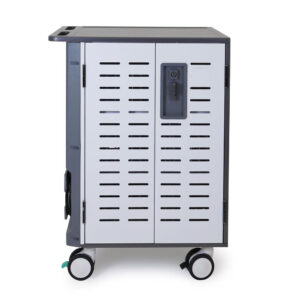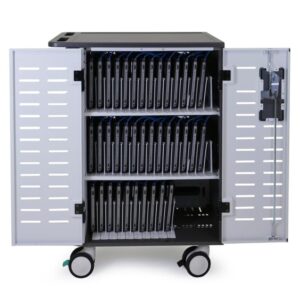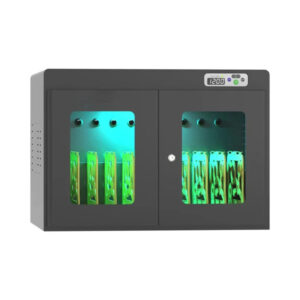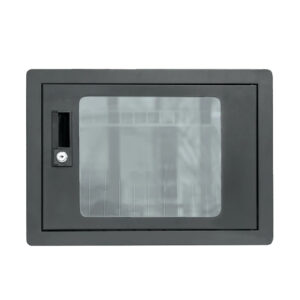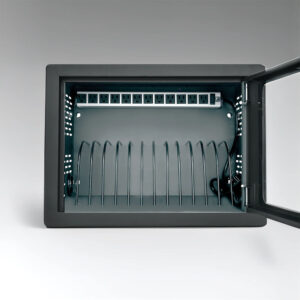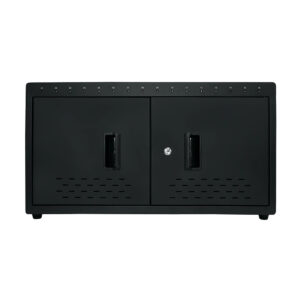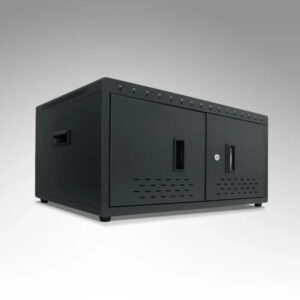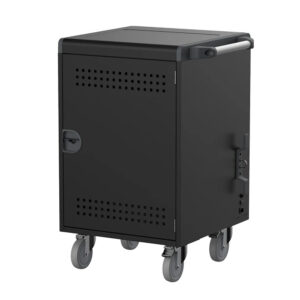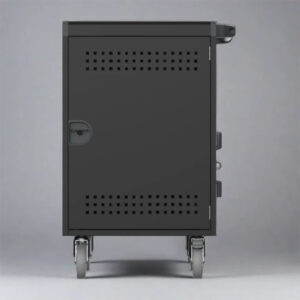Summary
Charging cabinets are specialized storage units designed to securely charge and organize a wide variety of electronic devices, including laptops, tablets, smartphones, and more. These versatile units are particularly notable for their role in educational institutions, healthcare facilities, and corporate environments, where efficient device management is essential. By centralizing charging capabilities, charging cabinets enhance device uptime and streamline operations, making them a valuable asset in settings where technology is heavily utilized.
Equipped with multiple charging ports and safety features, charging cabinets can accommodate devices from various manufacturers, including Apple, Microsoft, Samsung, and Lenovo. Their design often includes adjustable shelving to cater to different device sizes and types, with some models offering advanced functionalities such as smart charging technology, which optimizes charging speed and prevents over-charging. This adaptability makes charging cabinets an essential solution for managing the diverse technological needs of modern organizations.
While charging cabinets provide significant benefits, they also face challenges, such as ensuring compatibility with multiple device types and managing power demands within existing infrastructure. Standardization issues across different regions can complicate their integration, necessitating ongoing efforts to improve interoperability and user experience. Additionally, maintenance and investment in these charging solutions are crucial for maintaining their effectiveness and meeting the growing demand for accessible charging options.
Overall, charging cabinets play a critical role in optimizing technology use across various sectors, offering efficient, secure, and organized solutions for managing electronic devices in a rapidly evolving digital landscape.
Table of Contents
Overview
Charging cabinets are specialized storage units designed to accommodate and charge a variety of electronic devices. These versatile cabinets are equipped with multiple charging ports, shelves, and safety features, allowing organizations to securely store, charge, and manage devices such as laptops, tablets, smartphones, and other portable gadgets in a centralized location.
Key Features
Charging cabinets often come with advanced functionalities to enhance user experience. They may include smart charging technology that optimizes charging speeds, prevents overcharging, and monitors the charging status in real-time. Additionally, many models are designed with adjustable shelves and racks to accommodate devices of various shapes and sizes, including medical-grade stainless steel options for enhanced disinfection in healthcare settings.
Device Compatibility
These cabinets can support a wide range of devices.
Laptops: Suitable for educational institutions and workplaces where multiple users require access to laptops throughout the day.
Tablets: Frequently used in both educational and business environments, tablets benefit from efficient charging and organization within these cabinets.
Smartphones: Charging cabinets provide a convenient solution for charging smart-phones in settings like schools, offices, and healthcare facilities.
Power Banks: Some charging cabinets are designed to accommodate power banks, ensuring that these essential devices are always charged and ready for use.
By offering a secure and efficient way to manage and charge various electronic devices, charging cabinets play a critical role in optimizing device uptime and organizational efficiency across different sectors.
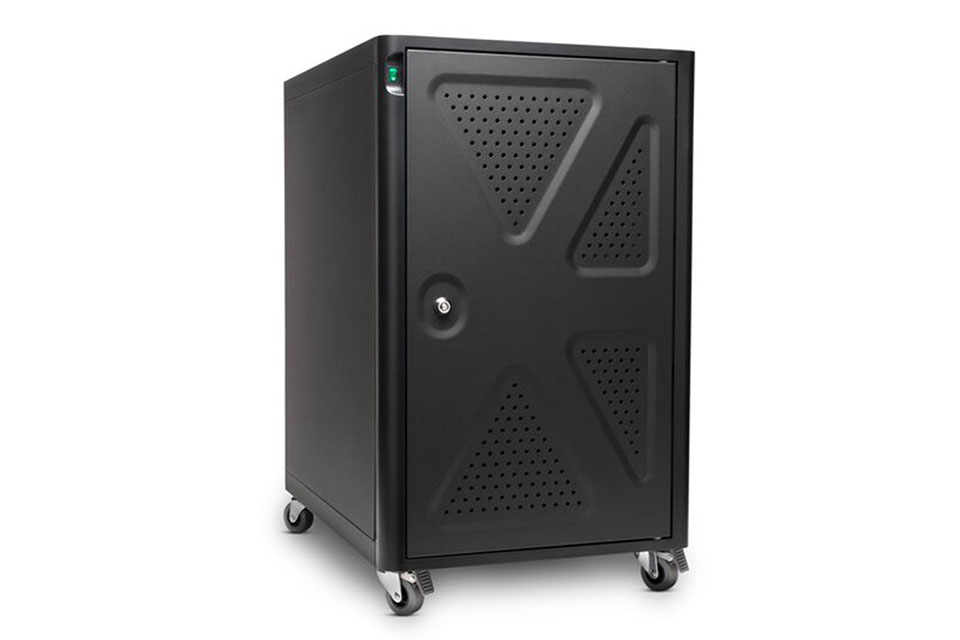
Types of Devices
Charging cabinets are designed to accommodate a wide range of electronic devices, providing efficient and secure charging solutions for various settings.
Compatible Devices
Charging cabinets can typically support devices such as laptops, tablets, and smartphones. Many modern charging solutions are compatible with a variety of manufacturers, including Microsoft, Apple, Samsung, Lenovo, and Dell, among others. For instance, modular charging cabinets are capable of holding up to 10 laptops or tablets with screens up to 13 inches, ensuring a versatile charging environment for educational institutions and businesses alike.
Specific Device Examples
Common devices that can be charged in these cabinets include:
Tablets: Including popular models like iPads and Chromebooks, which are often used in educational settings.
Laptops: Most charging carts can accommodate laptops ranging from small notebooks to larger devices with a diagonal screen size of 15 inches.
Smartphones: The cabinets often include USB ports that can charge multiple cellular phones simultaneously, catering to both staff and student needs.
Gaming Consoles and Accessories: Some charging solutions support game consoles and their controllers, making them suitable for recreational areas in schools or homes.
Headphones and Other Accessories: Many charging cabinets also have slots for charging earbuds and other tech accessories, providing a comprehensive solution for tech management.
Additional Features
Some advanced charging solutions feature asymmetric doors or windows for easy visibility of the devices being charged, as well as indicator lights to quickly identify any missing items. They often include various receptacles and USB ports to cater to different charging needs, ensuring that all devices remain powered and organized at all times.
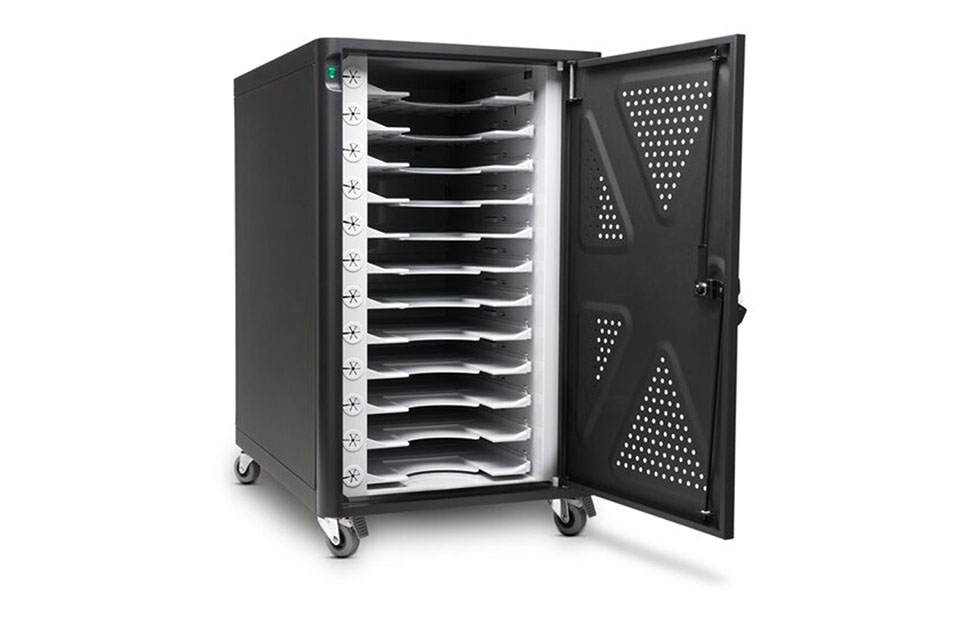
Charging Technologies
Inductive Charging
Inductive charging is an innovative technology allowing devices to charge without direct contact with a power source. This technology is categorized into three types: stationary charging, dynamic charging, and quasi-dynamic charging. Stationary charging occurs when the vehicle or device is parked, while dynamic charging allows for charging while in motion on roads or highways. Quasi-dynamic charging applies in situations where the device moves at low speeds, such as when a taxi is at a rank. However, inductive charging still faces challenges, including efficiency loss (up to 25% in trucks) and compatibility issues with different devices.
Recent Innovations
Recent developments in wireless charging include reverse wireless charging, where a mobile device can discharge its battery to charge another device, and the concept of “surface charging,” which involves integrating inductive charging stations into surfaces like desks or tables. Major manufacturers, including Samsung and Apple, are exploring different formats for wireless charging, with Samsung focusing on larger surface areas and Apple offering smaller dock-based solutions.
Overview of Charging Technologies
Charging technologies have evolved significantly, enabling various devices to receive power efficiently. Two of the primary methods include wired charging and wireless charging, with each having its unique applications and benefits.
Wired Charging
Wired charging remains the most common method for powering devices. USB charging stations, for instance, come equipped with multiple ports (ranging from 16 to 48) to accommodate various devices like smartphones, tablets, and laptops, providing up to 2.4 amps of high-speed charging per port. AC charging stations are designed to accommodate larger devices that plug into standard outlets, including Chromebooks and MacBooks, while also supporting wireless syncing capabilities.
Examples of Charging Applications
Charging technologies have been applied in various contexts. For instance, Oral-B rechargeable toothbrushes have utilized inductive charging since the early 1990s, demonstrating the practicality of this method in everyday devices. Furthermore, innovative products such as the 10-port USB-C/PD charger station have been developed for educational settings, promoting energy efficiency while accommodating multiple devices simultaneously.
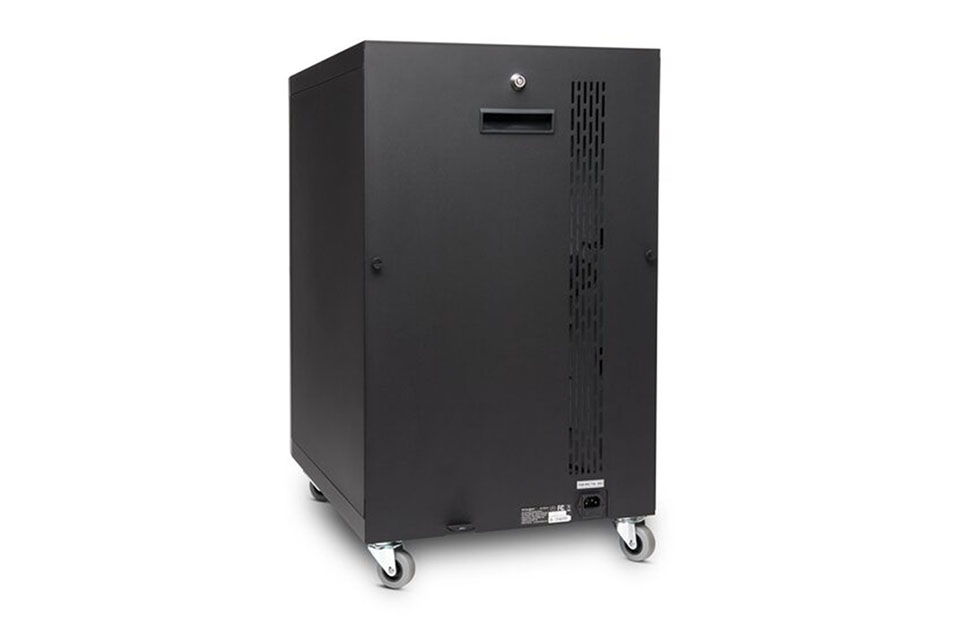
Usage Scenarios
Charging cabinets have become an integral part of various environments, particularly in educational institutions, healthcare facilities, and workplaces. They provide a centralized solution for charging a multitude of devices, ensuring that technology is always available and ready for use.
Educational Institutions
In schools, charging carts and cabinets are essential for maintaining the readiness of devices such as laptops, tablets, and Chromebooks. As technology has become a cornerstone of modern classrooms, these charging solutions help to mitigate issues of students arriving unprepared with non-functional devices. For instance, some districts implement charging carts with fully charged Chromebooks, referred to as “hot and ready,” which students can check out during the day. This system not only keeps students engaged but also minimizes disruption in the learning process.
Healthcare Facilities
In hospitals, charging stations play a critical role in improving patient experience and operational efficiency. With the rise of mobile device usage among patients and staff, the availability of charging stations can significantly reduce requests for chargers, freeing up healthcare staff to focus on more pressing tasks. Moreover, in emergency rooms, charging stations can alleviate the stress of patients who may arrive unprepared, ensuring they remain connected during critical times. This enhances communication and access to health-related information, ultimately contributing to a smoother healthcare experience.
Workplaces
Charging cabinets are also increasingly used in corporate environments where multiple devices need to be charged and stored securely. As businesses adopt various technologies, including laptops and mobile devices, the need for efficient charging solutions becomes evident. Organizations can determine the demand for charging stations by assessing their specific needs and planning installations accordingly. By integrating charging solutions into the workplace, companies enhance productivity and ensure employees have ready access to necessary devices, further streamlining operations.
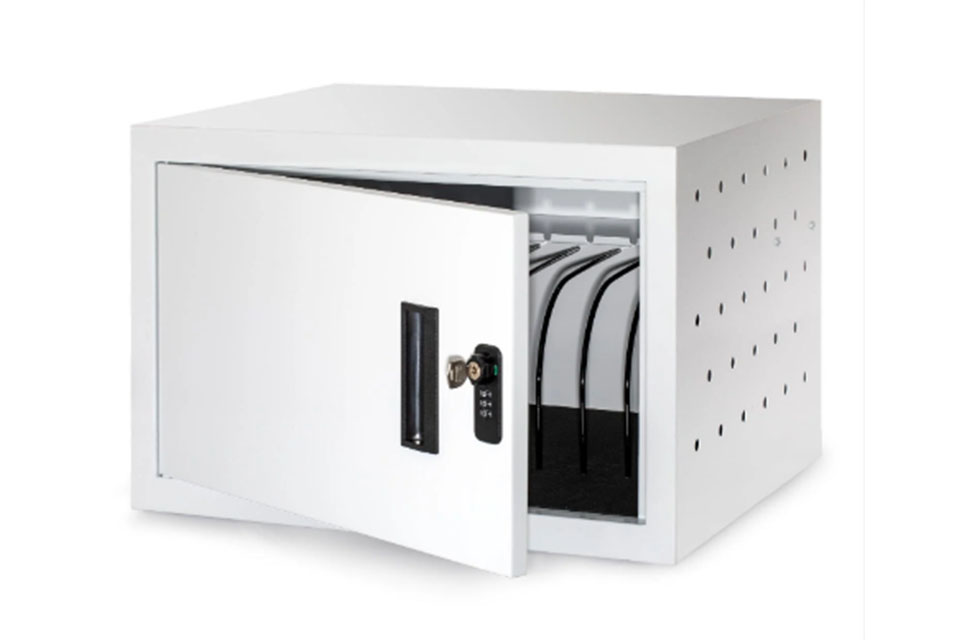
Benefits of Charging Cabinets
Charging cabinets provide numerous advantages, especially in environments where multiple electronic devices are utilized, such as educational institutions, healthcare facilities, and corporate settings. These secure storage units, designed to charge various devices simultaneously, enhance device management and optimize the use of technology in daily operations.
Efficient Device Management
One of the primary benefits of charging cabinets is their ability to streamline device management. Educational institutions, for example, can ensure that tablets, laptops, and smartphones are readily available for students and teachers, thereby reducing downtime and enhancing learning experiences. By consolidating charging and storage, schools save significant time and effort in distributing and collecting devices, ultimately leading to improved efficiency and organization.
Enhanced Security
Charging cabinets also improve the security of valuable devices. Many models are equipped with locking mechanisms and access control systems, ensuring that devices are protected from theft or damage when not in use. This feature is particularly crucial in public environments, such as libraries and community centers, where multiple users may have access to shared devices.
Improved Device Longevity
Utilizing charging cabinets helps prolong the lifespan of electronic devices. By ensuring that devices are stored and charged correctly, schools and businesses can reduce the frequency of battery replacements and maintenance costs. Smart charging technology integrated into these cabinets prevents overcharging, which contributes to better battery health and overall device performance.
Cost Savings
Investing in charging cabinets can lead to significant cost savings over time. The reduction in device downtime, along with the minimization of repairs and replacements, allows organizations to allocate resources more effectively. For educational institutions, this means that budgets can be directed toward other critical areas of need, enhancing the overall learning environment.
Space Optimization
Charging cabinets are designed with compactness in mind, making them suitable for various environments. Their efficient design allows them to fit seamlessly into classrooms, offices, or waiting areas, maximizing available space without compromising accessibility. This feature is particularly beneficial for schools and businesses looking to maintain an organized and clutter-free setting.
Scalability and Versatility
Another advantage of charging cabinets is their scalability. They come in various sizes and configurations, making them adaptable for different organizational needs—whether for small classrooms or large enterprises. Moreover, they can accommodate a wide range of devices, including laptops, tablets, and smartphones, thus serving diverse technological requirements.
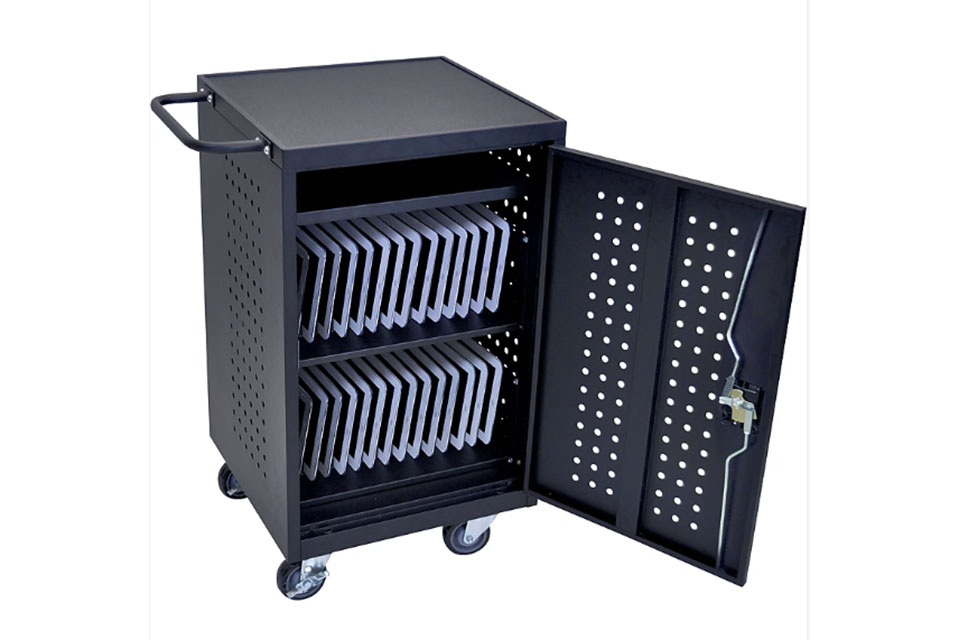
Challenges and Considerations
Charging cabinets, while providing a convenient solution for managing multiple devices, present several challenges and considerations that must be addressed for optimal performance and user satisfaction.
Device Compatibility
One of the primary challenges in using charging cabinets is ensuring compatibility with a wide range of devices. Different manufacturers, such as Microsoft, Samsung, Apple, and Lenovo, may have specific charging requirements and connector types, which can complicate the integration process. Success hinges on compatibility in charging options, as various designs cater to different device types, including tablets, smartphones, laptops, and game consoles.
Standardization and Global Compatibility
The lack of uniform standards across regions poses a further complication, as users may encounter different charging protocols. While the European Union has adopted the CCS standard for fast charging, other areas may use CHAdeMO or proprietary systems like Tesla’s connector. Efforts to harmonize these standards are ongoing, but until achieved, this variability can impact user experience and device interoperability.
Maintenance and Downtime
Maintenance is a crucial aspect of managing charging cabinets, as operational efficiency can diminish over time. Regular troubleshooting is necessary to address common issues, such as power supply interruptions, which can abruptly halt charging. Ensuring that these cabinets are maintained and repaired promptly can help minimize downtime and maintain user satisfaction.
Investment and Funding
Lastly, expanding charging networks, including the installation of charging cabinets, requires substantial investment from both public and private sectors. Collaborations, such as those seen in the UK with BP and other firms, demonstrate how public-private partnerships can facilitate the necessary funding to overcome financial barriers. Without adequate financial support, the deployment of charging cabinets may lag behind the growing demand for accessible charging solutions.
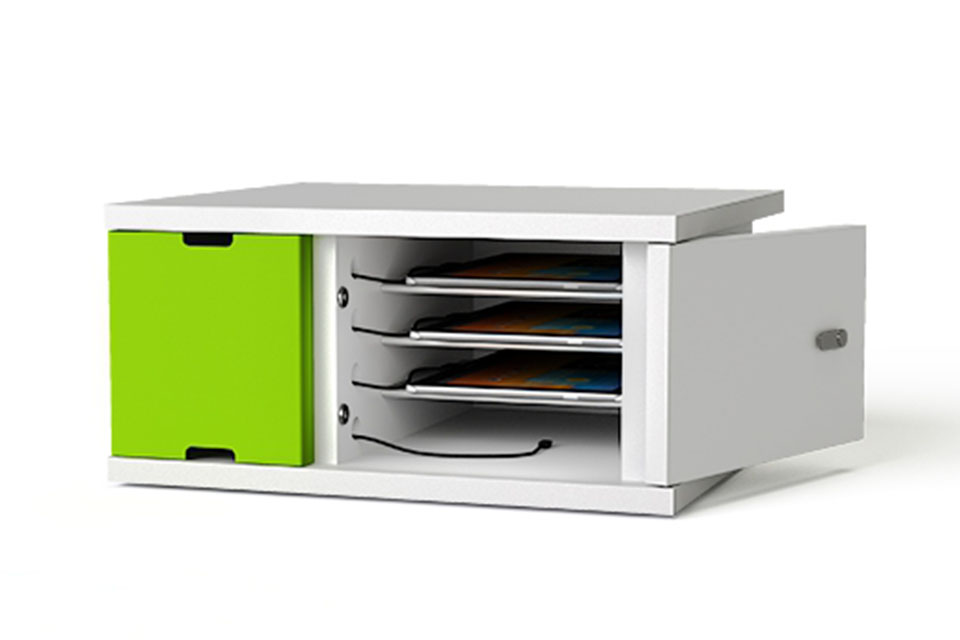
Technological Advancements
Charging cabinets have evolved significantly in recent years, driven by innovations aimed at improving user experience and enhancing the efficiency of a charging processes. These advancements have made charging cabinets essential in various settings, from educational institutions to corporate offices and public spaces.
Smart Charging Solutions
One of the most notable technological advancements is the integration of smart charging solutions. These systems enable real-time monitoring, remote management, and dynamic pricing, which optimize the use of charging resources and enhance grid efficiency. Smart charging cabinets can track the status of each device, providing detailed insights into charging times and battery health, thereby ensuring that devices are always ready for use.
Enhanced Charging Speed
Breakthroughs in charging technology have also led to the development of ultra-fast charging capabilities. Modern charging cabinets can deliver significantly higher power outputs, with some stations capable of providing up to 350 kW. This advancement drastically reduces charging times for a wide range of devices, making it possible to quickly charge multiple items simultaneously.
Multi-Device Compatibility
Charging cabinets have been designed to accommodate a diverse range of devices, including laptops, tablets, smartphones, and even wearable technology. Features such as retractable cables and universal charging ports enhance the cabinets’ versatility, allowing users to charge different devices without the hassle of carrying multiple chargers. Furthermore, innovations such as wireless and inductive charging are beginning to make their way into charging cabinets, offering even greater convenience.
Monitoring and Management Features
Modern charging cabinets come equipped with advanced monitoring and management features that enhance their usability. Many cabinets include digital screens that provide real-time feedback on the charging status of devices and can even facilitate user notifications about when devices are fully charged or need to be returned. These features not only improve user experience but also help organizations track the usage of their charging stations for better resource management.



